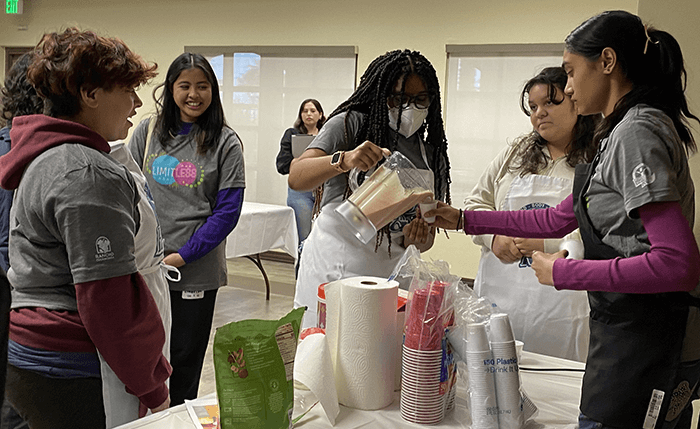
By: Megan Holdaway, RDN
As a registered dietitian nutritionist, I am often asked, “Is dairy milk good for you?” People know they should eat more plants, but does that mean beverages made from almonds or rice are better than dairy milk? I believe what they’re really asking me is, "What does current nutrition science say about drinking dairy milk?"
Plant-based eating patterns are recommended by nutrition science. USDAs MyPlate recommends that half of the plate contains fruits and vegetables, but plant-based does not necessarily mean eating only plants. In fact, all three eating patterns recommended by the 2015 Dietary Guidelines for Americans include low-fat and fat-free dairy foods because milk, cheese and yogurt provide important nutrients that support good health.1
Why? Because milk and dairy foods contribute more to human health than the sum of their individual nutrients. While calcium, protein, vitamin D, potassium and many other nutrients found in dairy foods all contribute to good nutrition, it is dairy’s total package of nutrients working together that offers a unique contribution to optimal human health. Studies that examine whole foods like milk, cheese, yogurt and other fermented dairy foods suggest that the many nutrients found in these whole foods work together in synergy to contribute to favorable outcomes such as reduced risk for chronic disease.2
Yes. In fact, starting good nutritional practices early in life can help children establish healthy dietary patterns that are vital to optimal growth and development. The American Academy of Pediatrics recommends exclusive breast-feeding for about six months, followed by continued breast-feeding as complementary foods are introduced, with the continuation of breast-feeding for one year or longer as mutually desired by mother and infant.3 At the age of 1 year, children should consume approximately 16 to 24 ounces of whole milk per day. Young toddlers have high nutritional requirements to support rapid growth. The fats found in milk and dairy foods are needed to deliver adequate calories and to help support early cognitive development. Fat-free beverages made from plants like almond or rice, or even fat-free dairy milk, are not recommended for children under 2 years of age.4
Research confirms that the unique package of nutrients in milk and dairy foods helps children grow and build strong bones and muscles.5 Dairy milk has a high concentration of absorbable calcium, as well as protein, vitamin D, phosphorus, vitamin B-12, zinc and potassium; taken together, these nutrients provide a convenient package for building strong bones and muscles.
While children consume other calcium-rich foods like leafy greens and beans, it is often difficult to consume enough of these foods to deliver the nutrients they need without the inclusion of dairy.
Dairy foods are concentrated sources of high-quality protein that are a valuable part of healthy eating patterns. For instance, an 8-ounce glass of dairy milk provides 8 grams of protein. As mentioned above, this protein embedded in whole foods like milk, cheese or yogurt works together with dairy’s other nutrients for maximum health benefits.
I am consistently struck by the quality and quantity of scientific evidence that support the health benefits of dairy foods. Milk and dairy foods are concentrated sources of nutrients, and by including them in your meals and snacks, healthy eating truly is made easier. For additional information on milk and dairy foods, visit HealthyEating.org.
And if you are wondering, milk, cheese and yogurt are part of my daily food choices!

Megan Holdaway, RDN
Megan Holdaway, RDN
Megan Holdaway is a registered dietitian nutritionist and the Nutrition Science Program Manager at Dairy Council of California.
In today's society, it's vital to engage teenagers in experiential nutrition education to guide them toward making nutritious food choices.

Through our Let’s Eat Healthy Initiative, Dairy Council of CA proudly partnered with Centennial Farm to enhance its educational programming.

Subscribe to our blog to stay up to date on the latest news, products, and more.